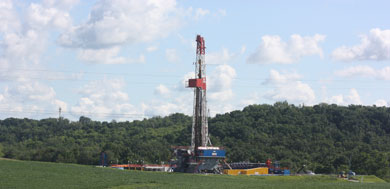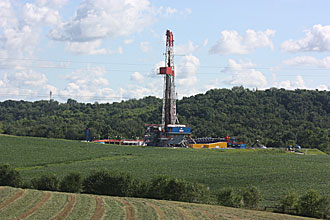Energy outlook: U.S. dependence on imported oil to wane in coming years
Friday, January 27, 2012

WASHINGTON — The Annual Energy Outlook 2012 released Jan. 23 by the U.S. Energy Information Administration presents updated projections for U.S. energy markets through 2035.
The projections show natural gas and renewables gaining an increasing share of U.S. electric power generation, domestic crude oil and natural gas production growing, reliance on imported oil decreasing, U.S. natural gas production exceeding consumption, and energy-related carbon dioxide emissions remaining below their 2005 level through 2035.
Domestic oil
According to Energy Information Administration Acting Administrator Howard Gruenspecht, domestic crude oil production is expected to grow by more than 20 percent over the coming decade.
Domestic crude oil production increased from 5.1 million barrels per day in 2007 to 5.5 million barrels per day in 2010.
Over the next 10 years, continued development of tight oil combined with the development of offshore Gulf of Mexico resources are projected to push domestic crude oil production to 6.7 million barrels per day in 2020, a level not seen since 1994.
Biofuel plays role
With modest economic growth, increased efficiency, growing domestic production, and continued adoption of nonpetroleum liquids, net petroleum imports make up a smaller share of total liquids consumption.
U.S. dependence on imported petroleum liquids declines in the latest outlook, primarily as a result of growth in domestic oil production of over 1 million barrels per day by 2020, an increase in biofuel use of over 1 million barrels per day crude oil equivalent by 2024, and modest growth in transportation sector demand through 2035.
Net petroleum imports as a share of total U.S. liquid fuels consumed drop from 49 percent in 2010 to 38 percent in 2020 and 36 percent in 2035
Natural gas. U.S. production of natural gas is expected to exceed consumption early in the next decade: The United States is projected to become a net exporter of liquefied natural gas in 2016, a net pipeline exporter in 2025, and an overall net exporter of natural gas in 2021.
Coal use slowing
In the new forecast, the natural gas share of electric power generation increases from 24 percent in 2010 to 27 percent in 2035, and the renewables share grows from 10 percent to 16 percent over the same period.
In recent years, the U.S. electric power sector’s historical reliance on coal-fired power plants has begun to decline. Over the next 25 years, the projected coal share of overall electricity generation falls to 39 percent, well below the 49-percent share seen as recently as 2007, because of slow growth in electricity demand, continued competition from natural gas and renewable plants, and the need to comply with new environmental regulations.
Other highlights
World oil prices rise, as pressure from growth in global demand continues. In 2035, the average real price of crude oil in the projected case is $146 per barrel in 2010 dollars.
World liquids consumption grows from 87.1 million barrels per day in 2010 to 109.7 million barrels per day in 2035, driven by growing demand in China, India, the Middle East and other developing economies.
Total U.S. primary energy consumption, which was 101.4 quadrillion Btu in 2007, grows from 98.2 quadrillion Btu in 2010 to 108.0 quadrillion Btu in 2035.
The fossil fuel share of energy consumption falls from 83 percent of total U.S. energy demand in 2010 to 77 percent in 2035.
Net imports of energy meet a declining share of total U.S. energy demand as domestic energy production increases. The projected net import share of total U.S. energy consumption in 2035 is 13 percent, compared with 22 percent in 2010 and 29 percent in 2007.
The projections include only the effects of policies that have been implemented in law or final regulations.





